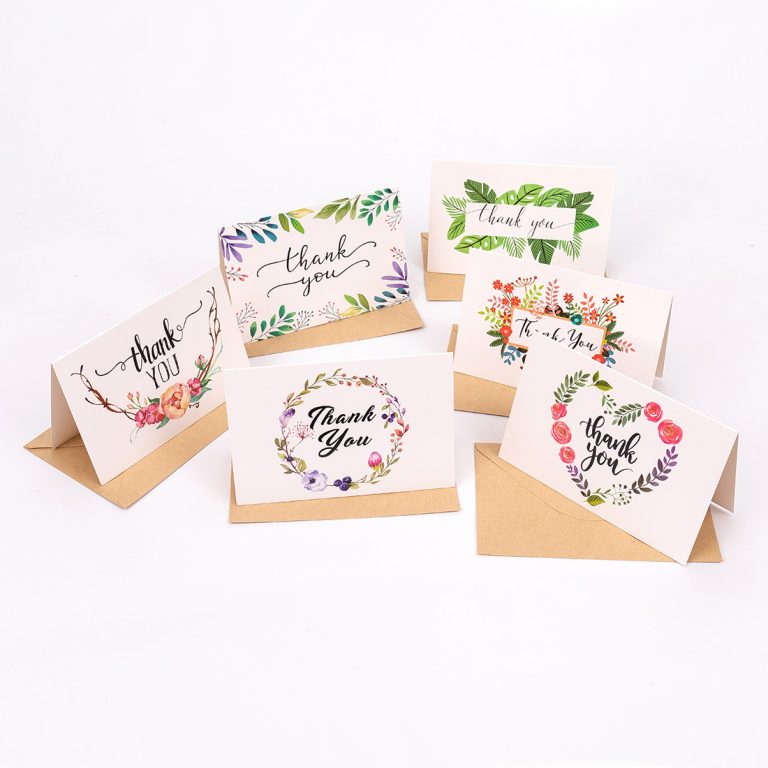Greeting cards are a universal expression of affection and communication, and often reflect the culture from which they originate. Despite their common purpose, the design, messages and occasions when these cards are sent vary greatly from country to country. Whether it’s a “thank you card” expressing gratitude or a “happy birthday card” celebrating a milestone, greeting card traditions and trends highlight fascinating cultural differences around the world.

A Brief History of Greeting Cards
The tradition of exchanging written messages dates back to ancient civilizations. In Egypt, people wrote blessings on papyrus scrolls, while in China, greetings on handmade paper conveyed New Year sentiments. Modern greeting cards as we know them originated in 15th century Europe, where hand-delivered Valentine’s Day cards became popular among the wealthy. By the 19th century, advances in printing technology made cards more accessible, leading to the global industry we recognize today.
Greeting Cards in Western Culture
In many Western countries, such as the United States and the United Kingdom, greeting cards are an integral part of social etiquette. Occasions such as birthdays, holidays, and anniversaries often call for greeting cards. US trends lean towards humor and personalization, with stores dedicated to niche categories such as pet-themed “thank you cards.”
In the UK, the tradition of sending a “Happy Birthday” card is full of formality and sentimentality. Birthday cards often include poetry or witty rhymes, while milestone birthdays (50th, 60th and beyond) hold special significance and often call for larger, more elaborate cards.
Asia: A fusion of tradition and modernity
Greeting cards from Asia often blend deep cultural traditions with contemporary influences. In Japan, the art of handwritten messages is highly valued, reflecting the importance of sincerity in communication. During New Year celebrations, people exchange “nengajo” cards to express gratitude and good wishes for the coming year. Despite the growth of digital communications, the practice of sending these cards is still highly respected.
In China, red envelopes are often preferred over physical greeting cards during festive occasions such as the Lunar New Year. However, greeting cards are popular for expressing emotions on Western holidays such as Christmas and Valentine’s Day. The designs often blend Western motifs with traditional Chinese symbols such as dragons or calligraphy.
India’s card culture is influenced by the diversity of festivals. Diwali cards with bright colors and religious imagery are often exchanged. Birthday cards have become more Westernized, but they retain bright and sophisticated designs that reflect the country’s vibrant culture.
Australian Greeting Card Trends
In Australia, greeting cards reflect a laid-back, outdoorsy lifestyle. Humor plays an important role in both thank you and happy birthday cards, with tongue-in-cheek messages often being preferred. Local themes such as native animals and landscapes often appear on the cards, making them unique and personal.
African Greeting Card Traditions
In Africa, greeting card practices vary from region to region. In countries like Nigeria, greeting cards are an important part of celebrations like weddings and baby showers. Cards are often handmade and incorporate local fabrics, beadwork, and bright colors. South African greeting cards often reflect cultural diversity, combining modern designs with indigenous art forms.
North and South American versions
In North America, greeting cards cover a wide range, from heartfelt messages to irreverent humor. Customization is becoming more and more popular, allowing people to create personalized designs and messages. The Hallmark brand is synonymous with greeting cards, launching categories tailored to specific relationships and emotions.
Latin American countries like Mexico incorporate family and religion into their greeting card traditions. For birthdays, especially “coming of age” celebrations, “Happy Birthday Cards” come with heartfelt wishes. Cards for religious celebrations such as baptisms and first communions are incredibly detailed and ornate, reflecting the deep cultural significance of these milestones.
European sophistication and simplicity
In Europe, greeting cards range from complex to simple. Scandinavian countries generally prefer minimalist, clean designs and subtle messaging that reflect their cultural emphasis on understatement. French greeting cards often display a refined aesthetic, with exquisite artistry and poetic sentiment.
German greeting cards place great emphasis on quality. Thank you cards and happy birthday cards are carefully designed and often come with a thoughtful handwritten note. Germany’s love of detail and precision extends even to this humble medium of expression.
Conclusion: Universal gesture, unique gesture
Greeting cards are more than just paper and ink; They are cultural artifacts that reflect society’s traditions, values and sensibilities. Whether you’re sending a formal “thank you card” in the United States, a “nengajo” in Japan, or a hand-designed card in Nigeria, these cards convey a universal message of care and connection.
As the world becomes more connected, the exchange of greeting cards provides a unique window into different cultures while promoting understanding and appreciation. So, the next time you pick out a “Happy Birthday card” or write a “Thank You Card,” remember the rich history and global traditions that make this simple gesture so meaningful.



